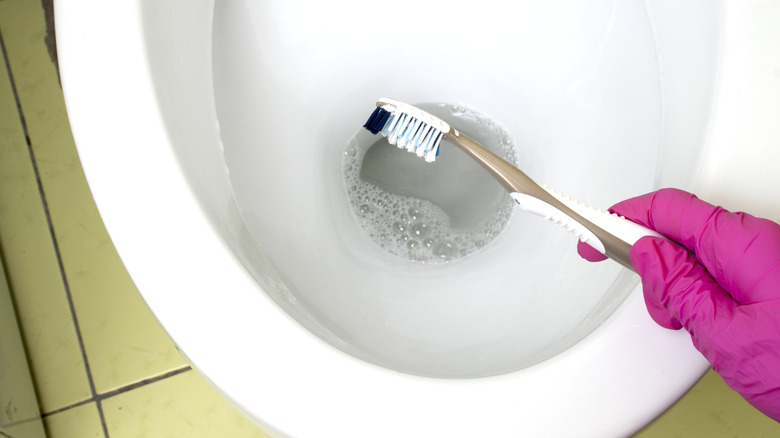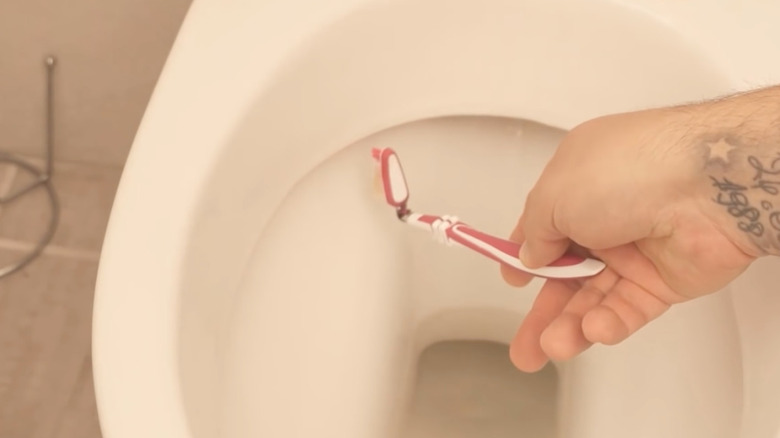Clean Hard-To-Reach Toilet Spots With An Unexpected Toothbrush Hack
Cleaning the toilet is an unpleasant task, but it cannot be avoided. If not done regularly and thoroughly, grime and bacteria can begin to settle under the rim of the toilet bowl — where the toilet's important rinsing jet holes are housed — and grow, obscured from view. For most people, the best way to clean under the toilet rim is to pull on some cleaning gloves, grab a sponge, and begin scrubbing until the stains come off; but there's a better — and less up-close-and-personal approach — to leave this space spotless
An old toothbrush and a lighter are all you need to create the perfect detail-cleaning tool for your toilet, according to Smart Fox's YouTube channel. Grab a cheap, plastic toothbrush from the dollar store (or hang onto your old one when the time comes to replace it), and aim the lighter so the flame will hit the back neck of the brush, just below the bristle portion. Let the lighter melt the plastic enough to soften it so you can bend the head of the brush backward. Once you are satisfied with the angle of the brush head (it should be bent so you can hold the handle from behind and scrub in side-to-side motions, with the brush reaching up under the rim), hold the plastic in place until it cools and hardens.
Scrub-a-dub-dub
Now that you have a specialized toilet-rim-cleaning tool, it's time to get to work. Apply a little toilet cleaner of choice to the brush — gel cleaners work well, as they will stick to the bristles — and begin scrubbing gently. Any stains should begin to lift easily. Flush the toilet as needed to rinse the mess so you can see where you're at with the chore. After you have sufficiently cleaned the rim, sanitize your toothbrush with a disinfectant cleaner, such as bleach, and add it to your bin of bathroom-cleaning supplies. It is recommended to label the toothbrush in some way — a permanent marker works well — in order to avoid someone using it by accident (although the deformed shape should give curious individuals enough pause to think twice about using it to clean their teeth).
Using your angled toothbrush can also work well to scrub other tight areas on the toilet that are difficult to clean, like the toilet seat hinges or the tight spaces directly under the water tank and between the water tank and the seat. You could also use an angled toothbrush (though you might want to create a separate brush for non-toilet-cleaning tasks) for the hardest spots to clean in your bathroom, like behind your faucets, which can collect water, and breed mold and slime growth.

